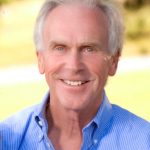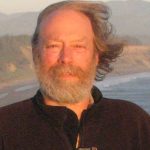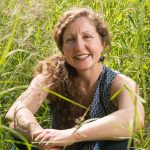Geos and conservation groups ask the Forest Service to shelve logging plans in roadless areas within the world-class Tongass National Forest
Geos Institute and conservation groups called on the Forest Service to properly analyze and reduce carbon emissions from logging in roadless areas on the Tongass National Forest, southeast Alaska, a globally significant carbon warehouse.
Scientists announce importance of the world’s primary forests and large, old trees in climate regulation and biodiversity conservation
 Primary (unlogged) forests and large, old trees provide high biodiversity and carbon value benefits
Primary (unlogged) forests and large, old trees provide high biodiversity and carbon value benefits
Dominick A. DellaSala and William R. Moomaw
Summary: Primary (unlogged) forests and large old, trees (live and dead) provide multiple benefits that forestall biodiversity and climate emergencies. They have high conservation value if allowed to achieve their ecological potential to support superior biodiversity, carbon storage and ecosystem benefits.
Oregon lawmakers look to supersize firefighting and forest cleanups; critics say it could be counterproductive
Debate on wildfire heats up in Oregon with Geos Institute’s Chief Scientist calling on legislators not to make matters worse by increasing logging.
Legislators will consider several bills in the upcoming short session that could expand and overhaul the way Oregon works to fight – and prevent – wildfires.
The plans include an unprecedented effort to restore forest health through thinning, removing brush and small trees, and increasing prescribed burns. Over the next 20 years, supporters aim to do that work on 5.6 million acres of forest and rangelands — an area equivalent to the state of New Jersey, or nearly 10 percent of Oregon’s entire land base.
The proposals also call for expanding firefighting resources at the Oregon Department of Forestry, putting more boots on the ground and modernizing equipment to put fires out when they’re small, thereby keeping costs low. And they would add administrative staff to make sure the state is promptly invoicing and collecting its firefighting costs – a problem that drove the Department of Forestry to the brink of insolvency last fall.
Read the full article: https://www.oregonlive.com/politics/2020/01/lawmakers-look-to-supersize-firefighting-and-forest-cleanups-critics-say-it-could-be-counterproductive.html
Amid forestry struggles, panel finds ‘surprising’ consensus on old-growth logging concerns in B.C.
Conservation North, supported by Geos Institute science, pushes for ban on old growth logging in world class inland rainforest in British Columbia.
When professional foresters Al Gorley and Garry Merkel were appointed to lead a sweeping review of how B.C.’s old-growth forests are managed, they made a deal with each other before hitting the road.
They wouldn’t come to a single conclusion until they had wrapped up what Gorley calls their “listening phase” — four months touring the province and gathering input from people of all walks of life, from forestry company executives to people who came in “off of the street or out of their garden and just wanted to share a personal perspective.”
After visiting 30 communities, the duo is taken aback by the consensus they’ve encountered as they prepare to wrap up the “listening” phase of the old-growth strategic review this week.
Keep reading: “Amid forestry struggles, panel finds ‘surprising’ consensus on old-growth logging concerns in B.C.“, by Sarah Cox, published Jan 27, 2020 at The Narwhal.
Scientists call for protecting half the planet to provide an equitable future for all species and a safe climate
View at Nature Research Sustainability Community. A response to Schleicher et al. “One Billion People to be Directly Affected by Protecting Half.” Nature Sustainability (2019): 1-3.
We are in a planetary recession marked by biodiversity collapse, climatic upheavals, freshwater shortages, global toxification, and unprecedented human and nonhuman displacements (Ripple et al, 2017). The only positive outlook lies in deep solutions and new narratives. Protecting at least half the Earth, terrestrial and marine, offers such an outlook. Safeguarding nature on a vast scale is necessary both to halt the mass extinction underway and to prevent the huge unleashing of carbon that will result from further ecological degradation (Steffen et al., 2018). In addition to affording robust natural solutions to the ecological exigencies that are imperiling all complex life, the Half Earth (or Nature Needs Half) initiative charts a course toward a sustainable and equitable human coexistence alongside the millions of life forms with whom we share the planet (Noss et al., 2012; Wilson, 2016; Dinerstein et al., 2017; Kopnina 2016; Kopnina et al., 2018).
In implementing Half Earth, conservationists, scientists, and policy-makers should work in concert with indigenous people and local populations (Goodall, 2015). Such efforts are aimed at ensuring that, en route to preempting further ecological catastrophes and healing the relationship between humanity and Earth, wide-scale nature protection will not adversely affect people in proximity to these natural areas (Goodall, 2015; Naidoo et al., 2019). The level of protection proposed will also bar corporate ventures, such as mining, logging, and industrial agriculture, from profiteering at the ongoing expense of the natural world and local and indigenous people (Vettese, 2018).
An Australia in flames tries to cope with an ‘animal apocalypse.’ Could California be next?
By Joseph Serna and Susanne Rust
Originally published January 14, 2020 at the Los Angeles Times
KANGAROO ISLAND, Australia — Sam Mitchell balanced himself on a eucalyptus branch 30 feet above the ground as his meaty left fist clutched a koala, which wailed like a pig with breathing problems. The dark gray marsupial batted its 3-inch black claws in the air helplessly, and minutes later Mitchell crawled down. He and the animal were safely on the ground.
Across much of Australia, volunteers and professionals are fighting to contain widespread blazes, with many also taking risks to save wildlife being killed by the millions. Kangaroo Island, a popular tourist destination and wildlife park off Australia’s southeast coast, has seen some of the worst damage to the nation’s biodiversity. Fires have overrun nearly half of the 1,700-square-mile island, and rescuers have been going tree to tree, trying to save what they can.
“There’s not much that isn’t threatening koalas at the moment,” said Mitchell, who has owned and run the Kangaroo Island Wildlife Park with his wife, Dana, the last seven years. The couple started a GoFundMe campaign so people can help with the rescues. Without quick intervention, koalas that survived the fires “are going to die of starvation,” he said.
In terms of human fatalities, Australia’s blazes this year have been less severe than some previous bush fires — with 27 people killed so far this season, compared to 75 during the nation’s 1983 “Ash Wednesday” inferno. But the impact on wildlife this year has been far more devastating, a preview of what California could experience in future fire seasons.
Chief Scientist Dr. Dominick DellaSala testifies in the Oregon legislature
Chief Scientist Dr. Dominick DellaSala testifies in the Oregon legislature on a proposal by state legislatures to provide $4 billion for logging Oregon’s forests, which would be a maladaptive climate change response.
Jane Fonda: Save Alaska’s Tongass National Forest from loggers in climate change fight
The Trump administration has proposed removing logging protections from the Alaskan rainforest. But now is the time to plant trees, not cut them down.
By Jane Fonda – Opinion contributor, USA Today, published December 31, 2019
I’ve been in Washington, D.C., for the last three months doing weekly actions called Fire Drill Fridays — because what 97% of active climate scientists are saying scares me, and I feel the need to do more.
According to the United Nations Intergovernmental Panel on Climate Change’s report issued in October 2018, if we don’t make great strides toward lowering greenhouse gas emissions in the next 10 years, the magnitude of the changes we’re already seeing will accelerate and may become irreversible.
We have the technology to transition away from fossil fuels, and this can’t happen soon enough. At the same time, we need to take proactive measures to reduce the concentration of carbon emissions already in the atmosphere.
That doesn’t necessarily require expensive technology. Trees are carbon sponges, and some scientists estimate that planting billions of new trees across the globe would be the cheapest and most effective way to absorb and store the emissions contributing to climate change. Planting new trees is important — and so is protecting existing forestland.
Tongass transition: Future of the forest depends on preserving old growth
Young growth timber harvest can sustain timber industry, environmentalist says — others aren’t so sure
By Peter Segall, Originally published December 22, 2019 at the Juneau Empire
A recently released mapping project seeks to show the importance of the Tongass National Forest not necessarily in terms of fishing, tourism or dollars but in carbon.
The Oregon-based Geos Institute published an analysis of the Tongass on Dec. 16, and it highlights the importance of the National Forest as a “carbon sink,” which the report says has global climate implications.
“The Tongass is part of a global network of temperate rainforests that make up ~2.5% of the world’s total forest coverage,” the report says. “But these rainforests have exceptional carbon stores for their relatively small spatial extent and are critically important in climate regulation collectively and individually.”
Alaska Roadless Rule Petition Comments
EarthJustice submitted comments to the USDA Forest Service, Alaska Region on December 18, 2019 on behalf of Geos Institute, Alaska Wilderness League, National Wildlife Federation, Audubon Alaska, Alaska Rainforest Defenders, Women’s Earth and Climate Action Network, Center for Biological Diversity, Defenders of Wildlife, Natural Resources Defense Council, The Wilderness Society, Center for Large Landscape Conservation, Sierra Club, and Southeast Alaska Conservation Council.
Latest News
Stay Updated!
Sign up to stay updated on our current initiatives and receive information you can use to build resilience in your community.

 Arsum is the Senior Adaptation and Coastal Resilience Specialist for the National Wildlife Federation’s Southcentral Region. In this role, she advances climate adaptation efforts, with a focus on nature-based approaches to address the impacts of climate change and extreme events across the Gulf region. She has authored and co-authored numerous publications on climate impact assessments and adaptation solutions. Additionally, she regularly participates in state-based coastal resilience and hazard mitigation planning across the Gulf, collaborating with regional and local stakeholders.
Arsum is the Senior Adaptation and Coastal Resilience Specialist for the National Wildlife Federation’s Southcentral Region. In this role, she advances climate adaptation efforts, with a focus on nature-based approaches to address the impacts of climate change and extreme events across the Gulf region. She has authored and co-authored numerous publications on climate impact assessments and adaptation solutions. Additionally, she regularly participates in state-based coastal resilience and hazard mitigation planning across the Gulf, collaborating with regional and local stakeholders. Frank is the former President of the Reinsurance Association of America. Frank currently serves on the Advisory Board of the OECD’s International Network for the Financial Management of Large-Scale Disasters, the RAND Center on Catastrophic Risk Management and Compensation, and the University of Cincinnati’s Carl H. Lindner III Center for Insurance and Risk Management Advisory Board.
Frank is the former President of the Reinsurance Association of America. Frank currently serves on the Advisory Board of the OECD’s International Network for the Financial Management of Large-Scale Disasters, the RAND Center on Catastrophic Risk Management and Compensation, and the University of Cincinnati’s Carl H. Lindner III Center for Insurance and Risk Management Advisory Board. Jim is a multilingual world traveler. Based in Bavaria during the 1970s, Jim spent most of this period in India, Afghanistan and Nepal, where he founded and operated a charitable medical clinic serving Tibetan Refugees. He settled in Oregon in 1983 on a forested ranch in the Umpqua National Forest.
Jim is a multilingual world traveler. Based in Bavaria during the 1970s, Jim spent most of this period in India, Afghanistan and Nepal, where he founded and operated a charitable medical clinic serving Tibetan Refugees. He settled in Oregon in 1983 on a forested ranch in the Umpqua National Forest. Dr. Micah Hahn is an Associate Professor of Environmental Health in the Institute for Circumpolar Health Studies at the University of Alaska-Anchorage. She received her joint PhD in Epidemiology / Environment and Resources from the University of Wisconsin-Madison and her MPH in Global Environmental Health from Emory University. Subsequently, she was a postdoctoral fellow for the CDC Climate and Health Program, and in this position worked collaboratively with the CDC Division of Vector-borne Diseases and the National Center for Atmospheric Research. Her research focuses on understanding the health impacts of climate change and working with communities to develop locally-relevant adaptation and resilience-building strategies. Dr. Hahn is also on the Management Team of the Alaska Climate Adaptation Science Center.
Dr. Micah Hahn is an Associate Professor of Environmental Health in the Institute for Circumpolar Health Studies at the University of Alaska-Anchorage. She received her joint PhD in Epidemiology / Environment and Resources from the University of Wisconsin-Madison and her MPH in Global Environmental Health from Emory University. Subsequently, she was a postdoctoral fellow for the CDC Climate and Health Program, and in this position worked collaboratively with the CDC Division of Vector-borne Diseases and the National Center for Atmospheric Research. Her research focuses on understanding the health impacts of climate change and working with communities to develop locally-relevant adaptation and resilience-building strategies. Dr. Hahn is also on the Management Team of the Alaska Climate Adaptation Science Center. Michael is a former Founding Principal of Resilient Cities Catalyst, a global non-profit helping cities and their partners tackle their toughest challenges. He is currently the Executive Director of Climate Resilience Academy at the University of Miami.
Michael is a former Founding Principal of Resilient Cities Catalyst, a global non-profit helping cities and their partners tackle their toughest challenges. He is currently the Executive Director of Climate Resilience Academy at the University of Miami. Dr. Quintus Jett is a consultant, educator, and strategist for public causes. He has a doctorate in Organizations & Management from Stanford University, and a two-decade faculty career which spans schools, departments, and programs of business, engineering, liberal studies, divinity, and public and nonprofit management. Following Hurricane Katrina in 2005, Dr. Jett launched a volunteer project in New Orleans, which enlisted residents, students from over a dozen colleges and universities, and hundreds of others to field map the city’s Gentilly district, Lower Ninth Ward, and New Orleans East. Dr. Jett is an innovator in higher education, bridging the divide between academic research and the other priorities of the modern university, including student access and diversity, community engagement, and providing foundations for life-long learning in today’s rapidly changing world.
Dr. Quintus Jett is a consultant, educator, and strategist for public causes. He has a doctorate in Organizations & Management from Stanford University, and a two-decade faculty career which spans schools, departments, and programs of business, engineering, liberal studies, divinity, and public and nonprofit management. Following Hurricane Katrina in 2005, Dr. Jett launched a volunteer project in New Orleans, which enlisted residents, students from over a dozen colleges and universities, and hundreds of others to field map the city’s Gentilly district, Lower Ninth Ward, and New Orleans East. Dr. Jett is an innovator in higher education, bridging the divide between academic research and the other priorities of the modern university, including student access and diversity, community engagement, and providing foundations for life-long learning in today’s rapidly changing world. Scott is Monfort Professor of Atmospheric Science at Colorado State University. He has written about 100 publications in the peer-reviewed climate literature, is a former editor of the Journal of Climate, and served for five years as founding Science Chair of the North American Carbon Program.
Scott is Monfort Professor of Atmospheric Science at Colorado State University. He has written about 100 publications in the peer-reviewed climate literature, is a former editor of the Journal of Climate, and served for five years as founding Science Chair of the North American Carbon Program. Linda has many years of experience in disaster preparedness and resilience. She has been an elected official on the Linn County Iowa Board of Supervisors, Chair of the Metropolitan Planning Organization, the East Central Iowa Council of Governments, the statewide Mental Health Developmental Disability and the Linn County Board of Health. Langston is a former president of the National Association of Counties (2013-2014).
Linda has many years of experience in disaster preparedness and resilience. She has been an elected official on the Linn County Iowa Board of Supervisors, Chair of the Metropolitan Planning Organization, the East Central Iowa Council of Governments, the statewide Mental Health Developmental Disability and the Linn County Board of Health. Langston is a former president of the National Association of Counties (2013-2014). Ken works with families and organizations as a mediator, organizational consultant, trainer and facilitator. Along with his passion for helping people prepare for and reduce climate change, Ken also volunteers as a mediator through Mediation Works and is passionate about supporting youth through mentoring with Boys to Men of Southern Oregon.
Ken works with families and organizations as a mediator, organizational consultant, trainer and facilitator. Along with his passion for helping people prepare for and reduce climate change, Ken also volunteers as a mediator through Mediation Works and is passionate about supporting youth through mentoring with Boys to Men of Southern Oregon. Matthew is a retired high school teacher who was once honored as Oregon High School Social Studies Teacher of the Year. Before his teaching career he was in the restaurant business in Portland. He is also a lawyer who has been a member of the Oregon State Bar Association since 1980.
Matthew is a retired high school teacher who was once honored as Oregon High School Social Studies Teacher of the Year. Before his teaching career he was in the restaurant business in Portland. He is also a lawyer who has been a member of the Oregon State Bar Association since 1980. Andrea is the Resilience Policy Advisor for the North Carolina Office of Recovery and Resiliency. She works across state agencies and with local governments to increase the state’s resilience to the impacts of climate change.
Andrea is the Resilience Policy Advisor for the North Carolina Office of Recovery and Resiliency. She works across state agencies and with local governments to increase the state’s resilience to the impacts of climate change.